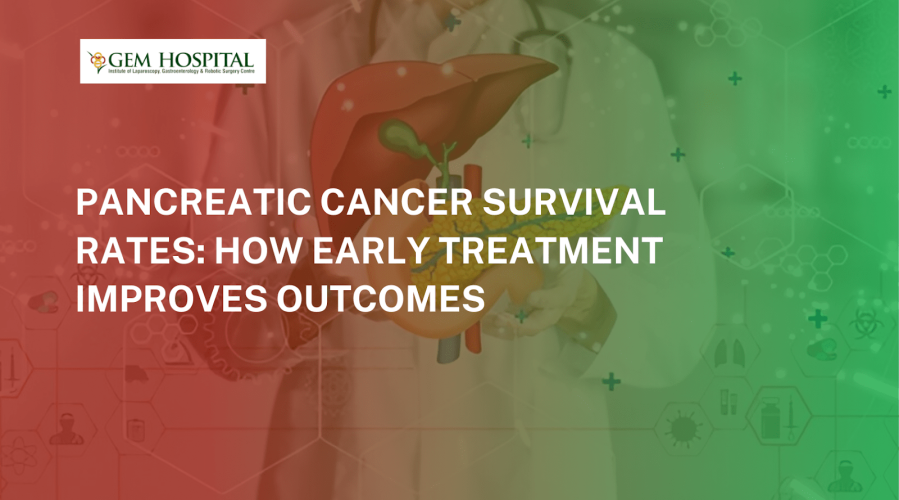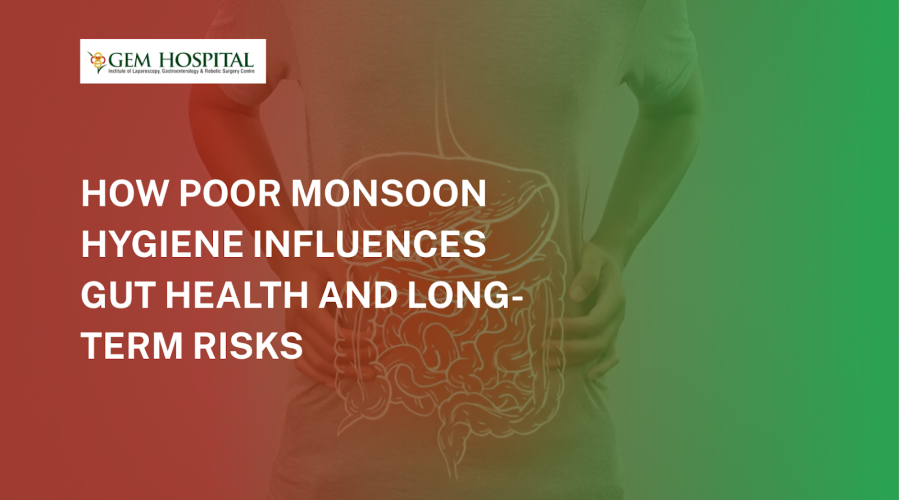Learn why street foods can increase the risk of esophageal and gastric issues. Understand contamination, hygiene lapses, and safety tips to protect your digestive health.
Pancreatic Cancer Survival Rates: How Early Treatment Improves Outcomes

Pancreatic cancer is often described as one of the most aggressive and challenging cancers to treat. Unlike other cancers that may show early warning signs, pancreatic cancer is notorious for being diagnosed in its later stages. This late detection is one of the key reasons why pancreatic cancer survival rates remain lower compared to other forms of cancer.
However, research and clinical evidence continue to highlight one powerful truth: early detection and timely treatment dramatically improve outcomes. With advancements in diagnostics, surgical techniques, and targeted therapies, patients who seek treatment early have a significantly better chance of survival.
Understanding Pancreatic Cancer Survival Rates
Survival rates are usually presented as the percentage of patients who live a certain number of years after diagnosis. For pancreatic cancer, the most common benchmark is the “5-year survival rate.”
- Overall 5-Year Survival Rate: Historically, this has been around 10%, but recent advances are gradually improving these numbers.
- Localized Stage (cancer confined to the pancreas): Survival rates can increase to 35–40% with early surgical intervention
- Regional Spread (cancer has spread to nearby tissues or lymph nodes): The 5-year survival rate drops to around 12–15%.
- Distant Spread (cancer has spread to other organs): Unfortunately, survival rates here are as low as 3%.
These numbers may seem discouraging at first, but they underline the importance of catching pancreatic cancer in its earliest stages.
Why Early Detection Matters
Pancreatic cancer is often called a “silent disease” because symptoms may not appear until the disease is advanced. But early diagnosis can make a significant difference:
- More Treatment Options: At an early stage, surgery is often possible, giving patients the best chance at long-term survival.
- Better Response to Therapy: Chemotherapy and targeted treatments tend to be more effective when the cancer has not yet spread.
- Improved Quality of Life: Early treatment can help manage symptoms before they become severe, allowing patients to maintain a better lifestyle.
Key Factors Affecting Pancreatic Cancer Survival Rates
Several factors can influence survival rates for patients diagnosed with pancreatic cancer.
- Stage at Diagnosis: Earlier stages have much higher survival chances.
- Tumor Location: Tumors in certain parts of the pancreas may be easier to remove surgically.
- Treatment Type: Patients undergoing surgery combined with chemotherapy often experience better outcomes.
- Patient’s Overall Health: Age, fitness levels, and pre-existing health conditions play a role in recovery and survival.
- Access to Advanced Care: Hospitals with specialized cancer treatment units often provide better outcomes due to expertise and advanced technology.
Signs and Symptoms That Shouldn’t Be Ignored
Because early detection is so crucial, it’s important to recognize possible warning signs:
- Persistent abdominal or back pain
- Unexplained weight loss
- Loss of appetite
- Jaundice (yellowing of the skin and eyes)
- Changes in stool or urine color
- Nausea and vomiting
- Sudden onset of diabetes (without other risk factors)
If any of these symptoms appear and persist, consulting a healthcare provider immediately can make all the difference.
Modern Advances Improving Survival Rates
In recent years, medical advancements have opened new doors in the fight against pancreatic cancer.
- Minimally Invasive Surgery: Techniques like laparoscopic and robotic surgeries reduce recovery time and improve outcomes.
- Targeted Therapy: Precision medicines that attack specific cancer cell mutations.
- Immunotherapy: Boosting the body’s natural immune system to fight cancer cells.
- Personalized Medicine: Treatment plans tailored to the genetic profile of each patient’s tumor.
- Improved Imaging: Early and accurate detection using advanced CT, MRI, and PET scans.
These innovations, when combined with timely detection, are steadily improving survival statistics worldwide.
Steps to Improve Survival Odds
Patients and families can take proactive measures that may help improve survival outcomes:
- Routine Screenings: Especially for those with a family history or genetic predisposition.
- Healthy Lifestyle Choices: A balanced diet, exercise, and avoiding smoking/alcohol reduce risks.
- Early Medical Consultation: Don’t ignore persistent or unusual symptoms.
- Choosing a Specialized Center: Hospitals with a focus on pancreatic cancer treatment provide access to the latest therapies.
- Follow Post-Treatment Plans: Regular follow-ups, medications, and lifestyle modifications play a critical role in recovery.
While pancreatic cancer survival rates remain a challenge globally, the outlook is steadily improving with early detection, modern treatment options, and specialized care. Patients who act quickly and seek treatment at advanced cancer hospitals have a far better chance of beating the odds.
If you or your loved one is concerned about symptoms or risks, take action today. At Gem Hospital, our expert oncology team provides cutting-edge diagnostic tools, advanced surgical care, and personalized treatment strategies to improve outcomes for pancreatic cancer patients.
Book Appointment now with Gem Hospital and take the first step toward better health and hope.
Blogs & Article
Learn how to protect your colon during the monsoon by avoiding contaminated food and water. Get essential hygiene, diet, and safety tips to prevent infections.
Discover how poor monsoon hygiene increases gut infections, weakens digestion, and leads to long-term health risks. Learn prevention tips for a healthier monsoon.


